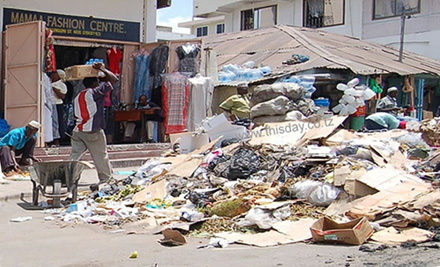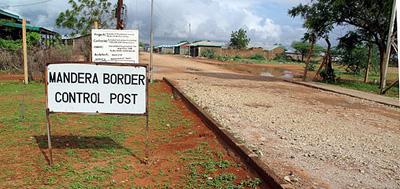As safe as Argentina or Hungary.
First-time safari travelers often refer to the U.S. State Department site for travel warnings, and then scared out of their wits, they call me.
But the U.S. State Department site is very much out of sync with the rest of the world’s analysis of Kenya’s safety for tourists, as it is for many other parts of the world, too. The much better traveler sites produced by the governments of Canada and Britain put Kenya in the much more realistic category shared by many, many countries, including Argentina and Hungary.
Traveling to East Africa is not as safe as a vacation to Disneyland, but it is likely as safe or safer than many other popular destinations in the world, and this is the message that is so deplorably eclipsed by the clearly political tincture of the U.S. State Department site.
Consider that yesterday’s travel warnings for February 25, 2009, included 28 countries, of which Kenya was one. But Egypt — where a tourist was killed and many more injured by a suicide bomber who walked into a tourist area of the Cairo bazaar this past Sunday — is not on the list. That was only four days ago! And in the past after much larger tourist killings in Egypt, the State Department still did not put Egypt on the list.
India is not on the U.S. State Department list. India had a devastating terrorist attack in one of its two main tourist cities, Mumbai, last November 26, and the attack lasted a horrifying three days. It was really more a war than an attack. 173 people were killed and more than 300 wounded, and many of these were foreign nationals. The main targets were luxury foreign tourist hotels, one of which was virtually obliterated.
Mexico isn’t on the U.S. State Department list. In fact, here’s the State Department’s message to college students traveling to Nogales this Spring Break:
Nogales/Sonora: Puerto Peñasco, a.k.a. “Rocky Point,” is located in northern Sonora, 60 miles from the U.S. border, and is accessible by car. The majority of accidents that occur at this Spring Break destination are caused by individuals driving under the influence of alcohol. Travelers should exercise particular caution on unpaved roads, especially in beach areas.
Last fall was the bloodiest time in Nogales’ long drug wars. The ongoing battles culminated in the assassination of a major police commander on November 1, with more than a day of heavy gun battles that injured scores of people, including several foreign nationals. Already this year, more than 3,000 innocents have been killed during gun battles in the border areas between the U.S and Mexico.
But according to our State Department, the greatest risk to college kids traveling now to Nogales is “driving under the influence of alcohol.”
The last real violence in Kenya was after the election in December, 2007. I wrote a lot about that, and though it was before I blogged, I have now post-dated all the broadcast emails into blogs. Just click to the left on the 2008 indexes. It includes daily reports and reports of my own trips to Nairobi during the conflict.
From January through June, 2008, we canceled or redirected 28 safaris that had planned to visit Kenya, and as I wrote in late February, that was probably an over reaction. By March, 2008, Kenya was completely peaceful.
When the violence began in December, 2007, there were 80,000 tourists in Kenya. These were mostly Europeans at its beaches. Half of all the tourists to Kenya never leave the beach. And half of those 80,000 stayed and did not alter their vacations. This was certainly a sad time for Kenya, and more than 1,000 people died in the violence. Not a single tourist was hurt.
Local violence, no matter how it is directed, does not make for a fun vacation, and that was the reason we altered all the safaris that had planned to go there in early 2008, even though I was never concerned for the safety of tourists, or of myself. The last terrorist incident in Kenya was in November, 2002, when terrorist blew up a beach hotel north of Mombasa frequented by Israelis. Thirteen people were killed and 80 injured. Almost three years later, on July 7, 2005, 52 people were killed and another 700 injured in… London. The “7-7″ attacks occurred during rush hour on the London public transport system, a clear and directed attack against westerners by Islamic terrorists.
Britain isn’t on anybody’s list.
I don’t think the story ends by adding up the deaths and destruction, even though those are the hard statistics and those statistics actually show Kenya rather risk-free when compared to Egypt, India, Mexico or …Britain. There is, of course, more to it. As many governments are quick to point out, their decision whether or not to issue a travel warning has to do not just with the actual risk of an incident, but how capable that government is of helping their nationals who might fall victim to it. Needless to say, Americans can be assisted much better if the incident is in Britain than Kenya.
But even with this important qualification, more realistic western governments like Britain and Canada don’t make the blatant (I believe, political) mistakes regarding countries like India and Egypt discussed above. And neither do they consign Kenya to the dustbin of 28 other worst terrorist countries, like America does. What’s behind this? Why does America come down so hard on Kenya?
It started with the Bush administration looking desperately for ways to vindicate 9-11. It looked backwards and found in 1998 true Al Qaeda terrorists who blew up the U.S. embassy in Nairobi in August. The Kenyans truly bungled the police action that followed that incident, having apprehended the principal suspect a few days after the incident, who then escaped and was never recaptured.
Just as the Bush administration exacerbated rather than diminished terrorism with its fool hardy war in Iraq, torture and rendition policies, it worsened the situation in Kenya and neighboring Somalia by a series of childish missteps.
At one point there were four separate travel warnings the Bush administration placed on Kenya. One was slapped on the country the day after Kenya refused to allow an American warship to dock at the port of Mombasa. Another was published the day after the Kenyan Speaker of the House tabled terrorism legislation written by the U.S. for Kenya, effectively killing it. The Speaker said at a press conference that the legislation promoted by the U.S. for Kenya “is worse than America’s own Patriot Act.” These two actions actually strengthened Kenya’s own internal security. But instead of support, the State Department collects Kenya with Burma and North Korea.
In December, 2007, someone “looking like an FBI agent” according to Nairobi’s Daily Nation newspaper, walked into the Hilton Hotel in Nairobi and shouted to everyone to leave, that the hotel was going to be blown up. That afternoon, another (fourth) travel warning was slapped on Kenya that warned of an imminent bombing of either the Hilton or Stanley Hotels. This was at the beginning of Kenya’s highest tourist season.
The next day, the British ambassador invited journalists to a press conference at the Stanley Hotel, and then to breakfast at the Hilton Hotel, where he put the record straight. A Somali was resisting deportation that day, and when being dragged onto the plane by Kenyan police, the miscreant shouted that the Hilton and Stanley hotels were going to be bombed. The British ambassador wanted to emphasize that was not reasonable intelligence.
Traveling anywhere outside a familiar world has changed substantially in the last generation; there is more risk. It would be fool hardy to suggest otherwise. The very acts we consider so routine when we go through airport security in Dubuque, Iowa, would seem draconian only 15 years ago if implemented at JFK. The world has changed, and with it, our need to reflect carefully on where we’ve been and where we want to go. There will be some who undertake this reflection and decide to stay home.
But for the American traveler who will not let the world situation dampen his thirst for seeing new things and discovering new cultures, and who wants a more balanced and complete assessment of tourism risk, I suggest other national sites than the U.S. Here are two good ones, but there are many more:
BRITAIN’s travel risk site places Kenya in the same list of countries that include India, Ecuador, Indonesia, Thailand and Turkey.
CANADA’s travel risk site gives Kenya a 2 out of 4 level of risk, placing it in the same category as India, Argentina and Hungary, among many others.
I’d like to leave you with a true story that shows how relative risk is to the international traveler.
The man who runs my transport in Nairobi is an old friend who I’ve been working with for more than 30 years. His eldest son came to the U.S. for college, and then as with so many Kenyans who are educated abroad, stayed here. He became engaged, and his wedding was scheduled for December, 2002.
It’s not easy for even the most well-off Kenyans to make arrangements and get visas to visit us in the United States, but this man’s family persisted through long lines and many hours and 17 of them finally made arrangements to come to the wedding. My wife and I agreed to host some of them.
I became somewhat perturbed by the end of the summer, 2002, because they hadn’t yet advised us of their travel arrangements. The wedding was to take place in Philadelphia, a wonderful venue, because it made visiting both New York and Washington rather easy. But by September, we still didn’t know their flight details, and my own calendar was getting tight.
Finally, an email came in the fall of 2002. In a lengthy apology for delaying us, and another lengthy thanks for all we had done and were offering to do, my man in Nairobi said he and the other men in the party who were coming over got together and decided that it “simply wasn’t safe to travel to America, now.” So they called off the biggest trip of their lives, forfeiting the considerable time and money it had taken them all to obtain visas. The son got married without his family, (although they all did come the next year).
9/11 was big around the world. It scared a Kenyan more than the embassy bombing in Nairobi in 1998. It reminded him of the Oklahoma City Federal building blast, of Timothy McVay and the Atlanta Olympic killings, the World Trade Center and Columbine, and all of these made traveling to America in 2002 much more risky than staying home… in Kenya.
The world is different, now, than even 30 years ago: the 1985 Achille Lauro cruise ship hijacking; the hijacking of TWA in Cairo in June, 1985; or the 1988 Pan Am disaster over Lockerbie. All of these unfortunate disasters preceded the Kenyan embassy bombing, and there were no fewer victims or less misery. It’s all quite relative. We must be more vigilant than before, but for those of us who will never extinguish our natural yearning to travel, we must also be measured and intelligent, something that right now, the U.S. travel site is not.



